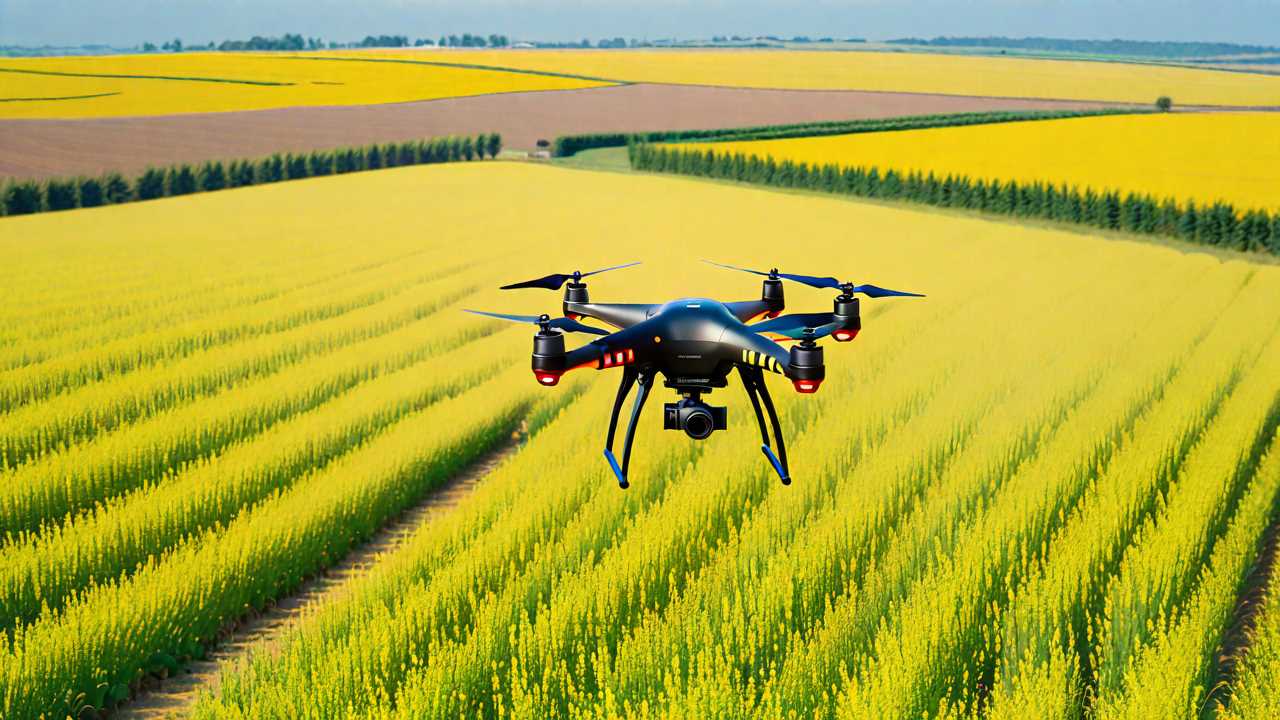Technology
What Are the Potential Uses of Drones in Agriculture?
Drones are revolutionizing agriculture with innovative solutions for crop monitoring and livestock management. They provide farmers with detailed insights into


Did you know that drones can significantly impact the agricultural sector by introducing innovative solutions to age-old farming practices? Imagine the possibilities of utilizing drones for tasks like precision crop monitoring, automated spraying, and even evaluating soil health. The potential uses of drones in agriculture are vast and hold promise for transforming the way we cultivate crops and manage livestock. Discover how these unmanned aerial vehicles are reshaping the future of farming with their capabilities and benefits for the agricultural industry.
Precision Crop Monitoring
Utilizing drones in agriculture allows for precise crop monitoring, enhancing efficiency and productivity through real-time data collection and analysis. Drones equipped with advanced sensors can capture high-resolution images of crops, providing farmers with detailed insights into the health of their fields.
By leveraging technologies like multispectral and infrared cameras, drones can detect early signs of stress, disease, or nutrient deficiencies, enabling prompt interventions.
These aerial vehicles offer a unique vantage point, allowing farmers to survey vast areas quickly and accurately. The data collected by drones can be processed using specialized software to generate detailed maps highlighting areas that require attention.
Through this targeted approach, farmers can optimize resource allocation, such as fertilizers and pesticides, leading to cost savings and environmental benefits.
Incorporating drones into crop monitoring practices not only increases precision but also saves time and labor. By automating data collection and analysis, farmers can make informed decisions promptly, resulting in healthier crops and higher yields.
Embracing drone technology in agriculture is a step towards a more sustainable and efficient farming future.
Automated Spraying and Irrigation
Improving agricultural practices, drones equipped with automated spraying and irrigation systems offer precision and efficiency in managing crop health and water distribution. These drones, fitted with advanced sensors and GPS technology, can accurately apply pesticides, fertilizers, and water to specific areas of the field based on real-time data analysis. By utilizing drones for spraying and irrigation, farmers can significantly reduce costs associated with manual labor and minimize the risks of over or under-application of chemicals.
Automated spraying drones excel in targeted pesticide application, reducing environmental impact, and increasing overall crop yield. The precise control over spraying ensures that only necessary areas receive treatment, minimizing chemical runoff and optimizing crop protection.
Additionally, irrigation drones enable farmers to deliver water precisely where needed, promoting water conservation and efficient resource utilization.
Incorporating drones with automated spraying and irrigation capabilities into farming practices not only boosts productivity but also fosters sustainable agricultural methods. The efficiency and accuracy of these systems contribute to improved crop health, increased yields, and reduced environmental footprint, making them indispensable tools in modern agriculture.
Soil Health Assessment
An essential aspect of modern agricultural management involves evaluating soil health through advanced drone technology. Drones equipped with specialized sensors can provide valuable insights into soil conditions, nutrient levels, moisture content, and overall health.
These drones capture high-resolution images and data that are then analyzed to generate detailed soil maps and reports. By utilizing drones for soil health assessment, farmers can make informed decisions regarding irrigation, fertilization, and crop selection.
The real-time data collected by drones allows for precise adjustments to be made, optimizing crop yield and minimizing environmental impact. The ability of drones to cover large areas efficiently makes soil health assessment more cost-effective and accessible to farmers of all scales.
This technology enhances traditional soil sampling methods by providing comprehensive and up-to-date information without the need for extensive manual labor. Incorporating drones into soil health assessment practices empowers farmers to proactively manage their land, promoting sustainable agricultural practices and ensuring long-term soil productivity.
Livestock Tracking and Management
Drones equipped with advanced tracking technology are transforming livestock management practices in agriculture by providing real-time monitoring and precise data analysis. This innovative approach offers farmers a more efficient and accurate way to track and manage their livestock.
Here are five key benefits of using drones for livestock tracking and management:
- Improved Grazing Management: Drones can monitor livestock grazing patterns, helping farmers optimize pasture usage and prevent overgrazing.
- Early Disease Detection: By using thermal imaging sensors, drones can identify sick animals early on, allowing for timely intervention and preventing the spread of diseases.
- Enhanced Security: Drones can patrol livestock areas, detecting any potential threats such as predators or intruders, enhancing overall security measures.
- Behavior Monitoring: With the ability to capture high-resolution images and videos, drones enable farmers to observe livestock behavior remotely, aiding in understanding and addressing any behavioral issues.
- Precision Livestock Inventory: Drones can quickly and accurately count livestock, providing farmers with up-to-date inventory data for better decision-making.
Frequently Asked Questions
Can Drones Be Used for Pest Control in Agriculture?
Think drones are just for fun? Think again. Drones can transform pest control in agriculture. With precision spraying and monitoring capabilities, they offer a high-tech solution to managing pests effectively and efficiently.
How Do Drones Handle Inclement Weather During Operations?
When operating in inclement weather, drones equipped with advanced sensors and GPS technology can autonomously adjust flight paths to maintain stability and complete missions successfully. This guarantees efficient data collection and monitoring despite challenging conditions.
Are There Regulations for Using Drones in Agriculture?
Regulations for using drones in agriculture are essential. Adherence guarantees safety, privacy, and efficiency. By following guidelines, you contribute to the industry’s growth and public acceptance. Stay informed and fly responsibly.
What Is the Lifespan of Drones Used in Agricultural Practices?
In agriculture, drones typically have a lifespan of 3-5 years. Regular maintenance and proper storage can extend this. Upgrading technology may be necessary to stay competitive. Consider factors like battery life and wear and tear.
Can Drones Assist in Monitoring Crop Diseases?
Can drones assist in monitoring crop diseases? Yes, they provide real-time data on plant health, allowing for early detection of issues. With drones, you can cover vast fields efficiently, pinpoint problem areas, and take timely action.


Hello! I’m Roger Jenkins, your go-to source at ReportingTheNews.com. I’m a USC graduate who combines journalistic precision with a Trojan’s passion. Based in sunny Los Angeles, my days are filled with more than just sunshine; they’re about capturing stories that resonate.
Beyond the newsroom, I’m an avid triathlete. Swimming, cycling, and running are more than just sports to me; they embody my commitment to discipline, focus, and a healthy dose of competition.
My love for travel takes me far and wide. Guadalajara, with its vibrant culture and unforgettable tacos, has a special place in my heart. I’m always searching for the next great story or a hidden culinary treasure.
At home, Nala, my energetic pet, is my constant companion. Together, we’re known in our neighborhood for our morning runs and evening strolls.
I’m driven by a belief in the power of storytelling to unite communities. Join me as we explore impactful narratives and stay updated with the latest news. You’ll also get a peek into my sports passions and travel escapades.
Want to get in touch? Follow me on Instagram for more insights and updates.

